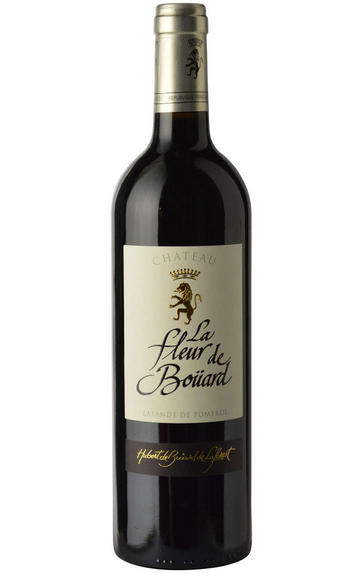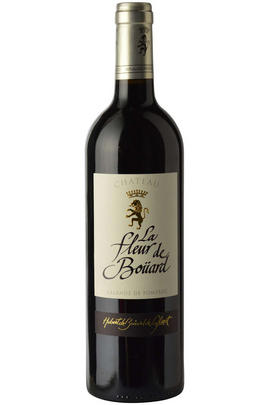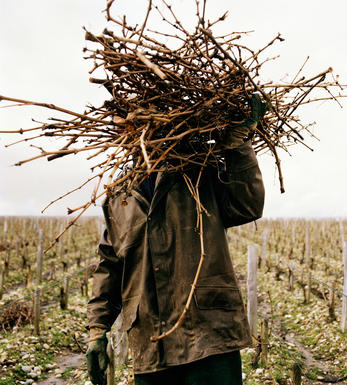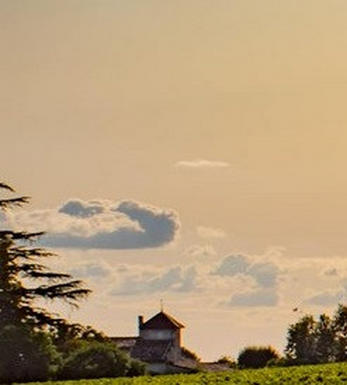
2009 Château La Fleur de Boüard, Lalande de Pomerol, Bordeaux

Critics reviews
The 2009 La Fleur de Bouard (made from yields of 45 hectoliters per hectare; 13.5% alcohol) is a Merlot-based wine with brilliant purity, abundant black cherry, plum, and boysenberry fruit, extraordinary density, decent acids, and high tannins. This full-bodied, concentrated, impressively endowed 2009 should age nicely for 10-15 years. At a recent tasting of the 2000 vintage, I was reminded of how great this estate’s luxury cuvee can be. It was off the charts in terms of richness and personality.
Unquestionably a star of Lalande de Pomerol is the 50-acre estate of Hubert and Corinne de Bouard, who produce wines that fly well above their pedigree. Tasting through older vintages proves that these are the “real deal,” as they age quite well. One can even argue that the luxury cuvee, La Plus de la Fleur de Bouard, is one of the top twenty wines being produced in Bordeaux - a remarkable achievement given the appellation’s lack of status.
(Robert Parker - Wine Advocate - April 2010)
The 2009 La Fleur de Bouard (made from yields of 45 hectoliters per hectare; 13.5% alcohol) is a Merlot-based wine with brilliant purity, abundant black cherry, plum, and boysenberry fruit, extraordinary density, decent acids, and high tannins. This full-bodied, concentrated, impressively endowed 2009 should age nicely for 10-15 years. At a recent tasting of the 2000 vintage, I was reminded of how great this estate’s luxury cuvee can be. It was off the charts in terms of richness and personality.
Unquestionably a star of Lalande de Pomerol is the 50-acre estate of Hubert and Corinne de Bouard, who produce wines that fly well above their pedigree. Tasting through older vintages proves that these are the “real deal,” as they age quite well. One can even argue that the luxury cuvee, La Plus de la Fleur de Bouard, is one of the top twenty wines being produced in Bordeaux - a remarkable achievement given the appellation’s lack of status.
(Robert Parker - Wine Advocate - April 2010)
About this WINE

Chateau La Fleur de Bouard

Lalande-de-Pomerol
Lalande-de-Pomerol is situated on the right bank of the Dordogne River, just northeast of Bordeaux. It is known for producing high-quality red wines, primarily made from Merlot grapes, that share many characteristics with the more famous neighbouring appellation of Pomerol.
The appellation covers approximately 1,200 hectares (about 3,000 acres) of vineyards, predominantly planted with red grape varieties, with Merlot being the dominant grape. Cabernet Franc and Cabernet Sauvignon are grown to a lesser extent.
The appellation shares a similar terroir (combination of soil, climate, and environmental factors) with Pomerol, famous for its clay and gravel soils. These soils are ideal for Merlot grapes and are known for their approachability and finesse. They often display characteristics of ripe dark fruits, such as plum and blackberry, along with soft tannins.
Winemakers in Lalande-de-Pomerol often use traditional Bordeaux winemaking techniques, including fermentation in stainless steel or oak tanks and aging in French oak barrels. This approach allows the wines to develop complexity and structure.
Like many Bordeaux appellations, Lalande-de-Pomerol estates may produce second wines, often called “second vins.” These wines are typically made from grapes from younger vines or different parcels within the vineyard. They offer a more accessible and affordable entry into the estate’s winemaking style.
Lalande-de-Pomerol is often compared to its more prestigious neighbor, Pomerol. While Pomerol is known for producing some of the most sought-after and expensive wines in Bordeaux, Lalande-de-Pomerol offers a more approachable price point while still delivering quality wines that share many of the characteristics of Pomerol wines.

Cabernet Sauvignon Blend
Cabernet Sauvignon lends itself particularly well in blends with Merlot. This is actually the archetypal Bordeaux blend, though in different proportions in the sub-regions and sometimes topped up with Cabernet Franc, Malbec, and Petit Verdot.
In the Médoc and Graves the percentage of Cabernet Sauvignon in the blend can range from 95% (Mouton-Rothschild) to as low as 40%. It is particularly suited to the dry, warm, free- draining, gravel-rich soils and is responsible for the redolent cassis characteristics as well as the depth of colour, tannic structure and pronounced acidity of Médoc wines. However 100% Cabernet Sauvignon wines can be slightly hollow-tasting in the middle palate and Merlot with its generous, fleshy fruit flavours acts as a perfect foil by filling in this cavity.
In St-Emilion and Pomerol, the blends are Merlot dominated as Cabernet Sauvignon can struggle to ripen there - when it is included, it adds structure and body to the wine. Sassicaia is the most famous Bordeaux blend in Italy and has spawned many imitations, whereby the blend is now firmly established in the New World and particularly in California and Australia.


Buying options
Add to wishlist
Description
The 2009 La Fleur de Bouard (made from yields of 45 hectoliters per hectare; 13.5% alcohol) is a Merlot-based wine with brilliant purity, abundant black cherry, plum, and boysenberry fruit, extraordinary density, decent acids, and high tannins. This full-bodied, concentrated, impressively endowed 2009 should age nicely for 10-15 years. At a recent tasting of the 2000 vintage, I was reminded of how great this estate’s luxury cuvee can be. It was off the charts in terms of richness and personality.
Unquestionably a star of Lalande de Pomerol is the 50-acre estate of Hubert and Corinne de Bouard, who produce wines that fly well above their pedigree. Tasting through older vintages proves that these are the “real deal,” as they age quite well. One can even argue that the luxury cuvee, La Plus de la Fleur de Bouard, is one of the top twenty wines being produced in Bordeaux - a remarkable achievement given the appellation’s lack of status.
(Robert Parker - Wine Advocate - April 2010)
wine at a glance
Delivery and quality guarantee